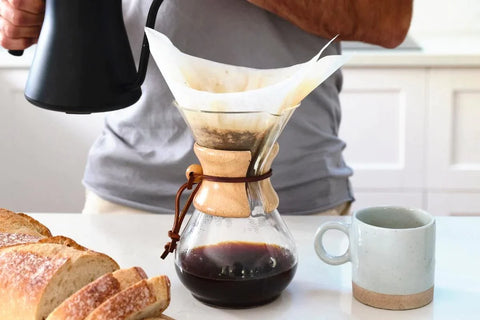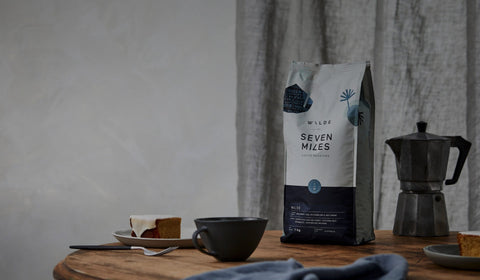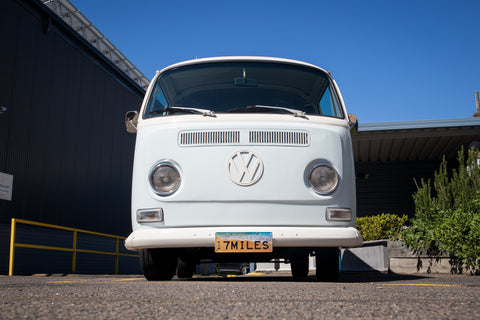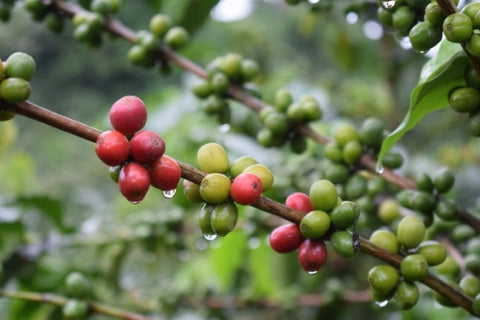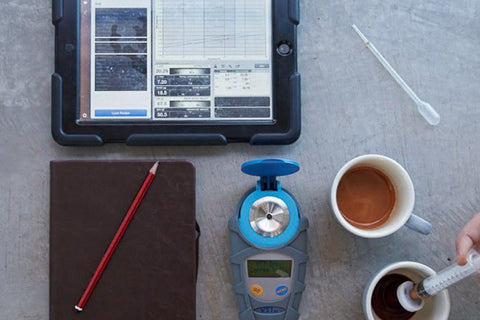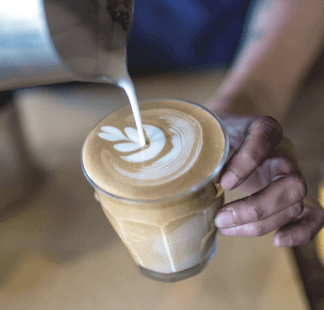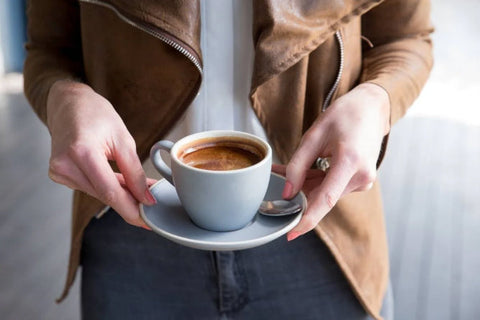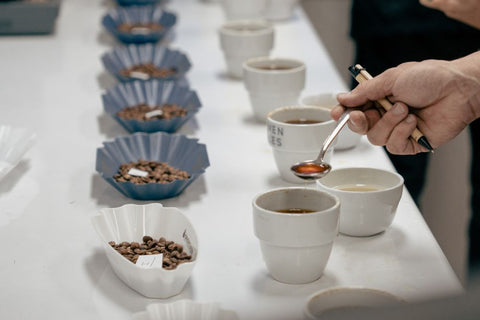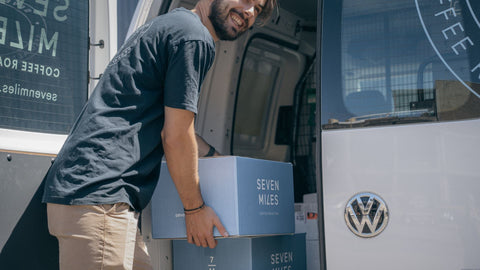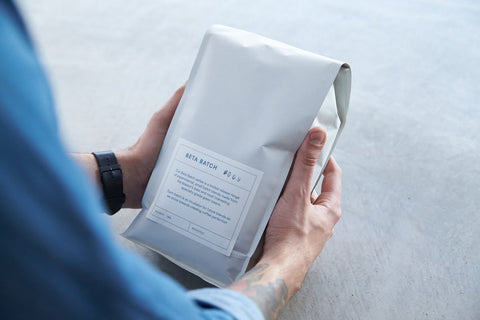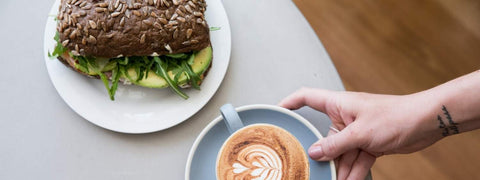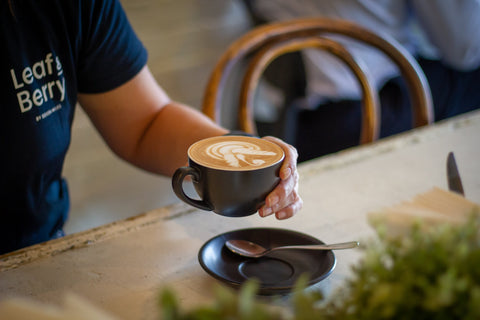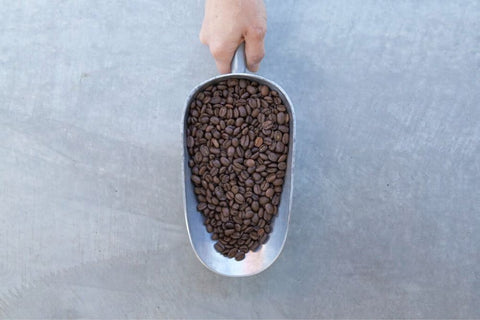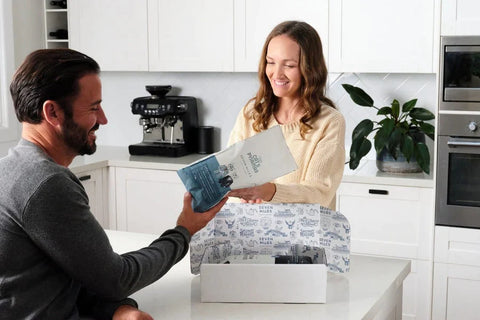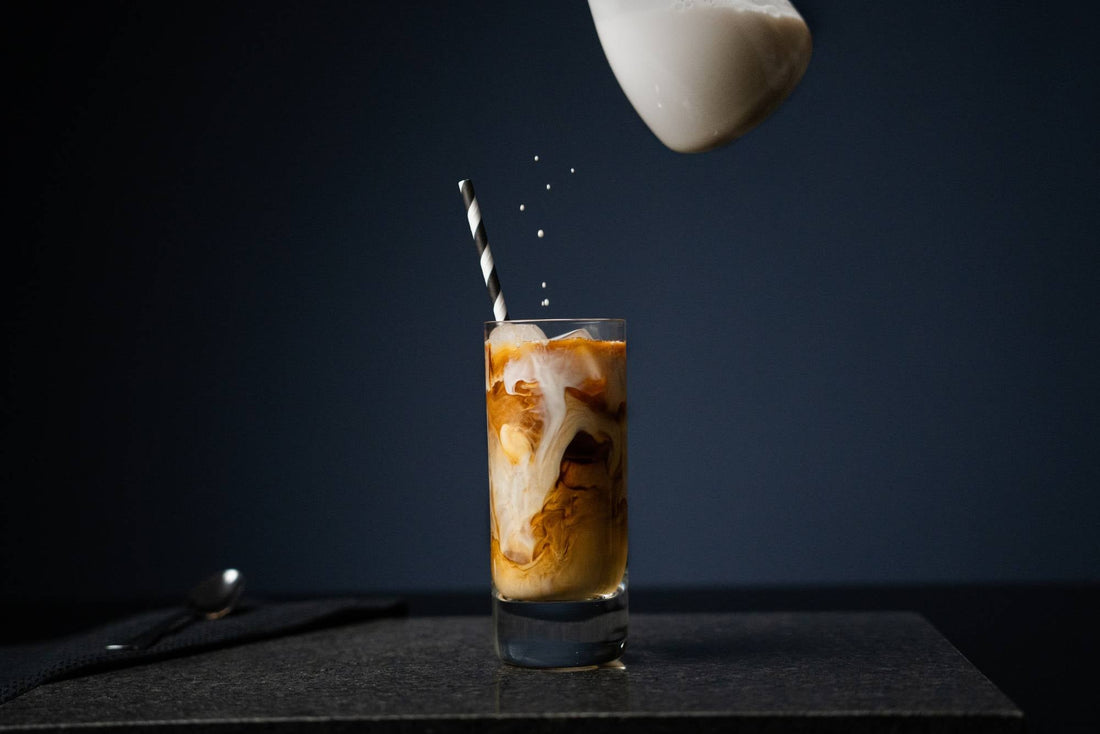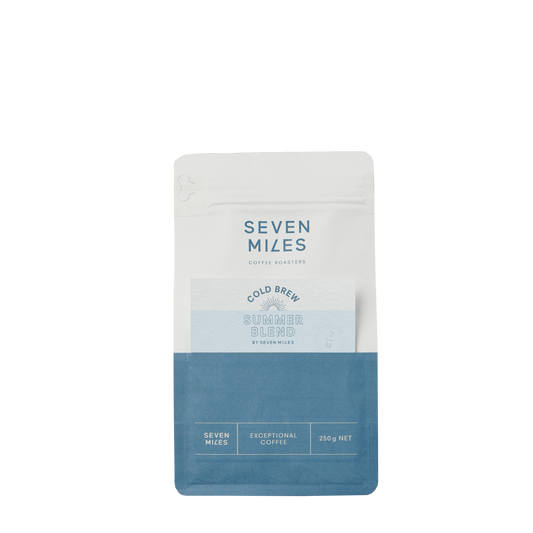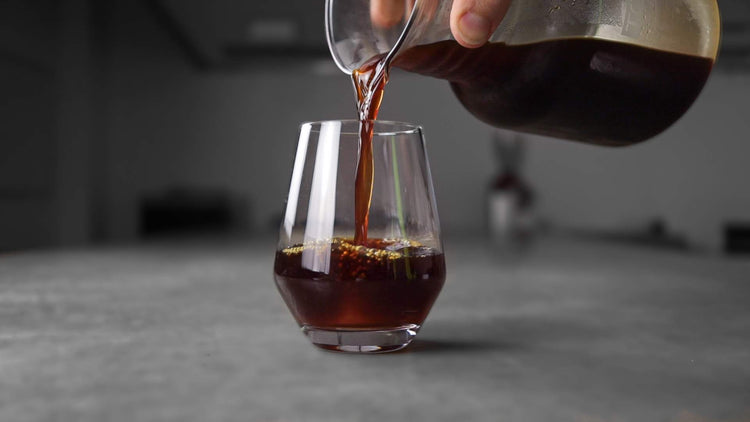If you're ready to step up your iced coffee game, then cold brew coffee may be just what you need. In this guide, we take a look at what it is, the equipment you'll need, and step-by-step recipes to get you started. If you're looking for the perfect coffee blend for your cold brew, check out our Cold Brew Summer Blend.
Jump to a section in this article
What you need to get startedBest Coffee for Cold BrewCold Brew RatioCold Brew Coffee Recipe: a Step-by-step guideServing cold brew by the glassCold Brew vs Cold DripEven more ways to serve Cold BrewBrewing coffee with cold water… Really?
Yes, really. Hot water may be a more efficient way of brewing, but cold water will get the job done if left long enough to brew. The modern version of this low-tech process was first made popular in the United States by Todd Simpson, who invented the Toddy brewer back in 1964.
As far as inventions go, it wasn’t exactly the iPhone - it’s essentially a plastic bucket with a filter, nonetheless it sparked a coffee drinking phenomenon that keeps on growing to this day.
Compared to chilling hot coffee, cold brewing produces a distinct chocolatey flavour profile and reduces perceived acidity. Another thing is that cold-brew coffee may remain in the fridge for a much longer period of time. While espresso chilled in the fridge will usually go bad within a few minutes, cold brew is still good up to a week after brewing.
What you need to get started
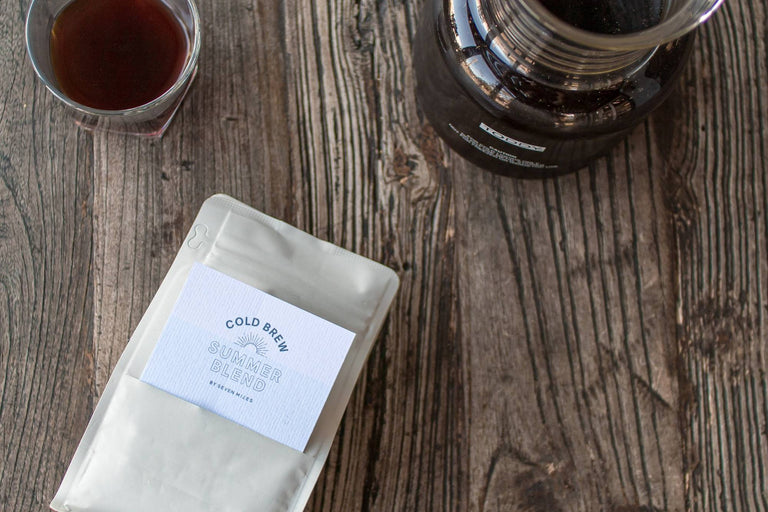
Grinder
You'll need a grinder that can produce a coarser grind size than a standard espresso grinder. If you already have a retail grinder, like a Ditting KR805 or a Mahlkonig EK43 then you’re all set. If not, we think the Baratza Forte or the Breville Smart Grinder Pro are a good choices - they're relatively affordable, they don't take up much space and can be used for grinding espresso, aeropress & any other brew methods you use.
If a grinder is out of the question, then you can use ground coffee – just ask to get it ground on the coarse side of a filter grind.
Brewer
There are literally dozens of cold brewers available for the coffee professional. The easiest way to get started is the classic toddy brewer (the recipe below is based on this device) - it’s cheap, functional and difficult to break.
Having said that, if you’re more of a DIY kind of person, you can get great results brewing in a saucepan (or a plunger / french press) and filtering the grounds twice: once with a sieve & once with a paper filter. The results will be just as good with this hack method, but the process is a little easier (& cleaner) with a dedicated device like the Toddy.
Filtered Water
Yes, water quality makes a massive difference. Our Coffee Next team have done some in depth work on the ideal water for brewing coffee – take a look. Suffice to say, water straight out of the tap is unlikely to give great results. If you can use the water that has been filtered for your espresso machine, that’s a better place to start.
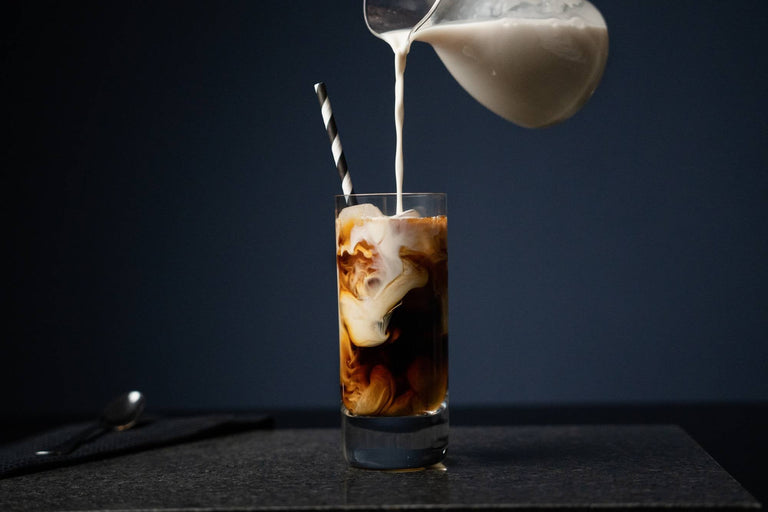
The Best Coffee for Cold Brew
To some extent, the right coffee beans to choose for cold brew will depend on how you plan on using it.
A typical espresso blend is good if you plan to add milk to the finished product. However, something roasted lighter, like a filter roast or a light espresso roast, is usually better for serving straight up.
In terms of origins - for me, the heavy body & fruity flavours of natural or honey-processed coffees tend to work better with cold brew. For example, the deep fruity sweetness of an Ethiopian natural or the heavy chocolate flavours of a Brazil Pulped-Natural are right on the money in a cold brew. On the other hand, the more delicate, refined acidity of washed Central American coffees just don’t seem to show their potential in cold brewing. You might be best to save these coffees for hot water brewing.
If you want to keep things simple, I’ll put in a shameless plug for our Cold Brew Summer Blend. We’ve blended & roasted coffees that we think taste great as cold-brew iced coffee - with or without milk.
Cold Brew Ratio
If you're not familiar with a 'brew ratio', here's a quick primer. A brew ratio is a way to compare the weight of the amount of ground coffee, to the amount of water you use to brew the coffee. We use ratios because you can use them to easily adjust the exact amount of coffee & water you use to match the size of the brewer you're using. For example, a ratio of 1:15 is 1 part ground coffee to 15 parts water. So, if you use 50g of coffee, you multiply that number by 15 to get 750g water (or 750ml, if you prefer to measure it that way).
With that out of the way, here are the ratios we think work best for cold brew.
Cold Brew Concentrate - 1:5 brew ratio
The classic way to cold brew is to make a concentrate that you can then dilute with water or milk (or other liquids) to make the finished product.
For those playing along at home, this is usually a recipe of around 1 part coffee to 5 parts water (or 200g of coffee per litre of water). Brewing a concentrate has the advantage of being versatile. Not only is it ideal for mixing with milk, it can also be used as an ingredient in other items - Such as cocktails, frappes and even in cooking.
While this versatility is great, it comes with a couple of downsides. Firstly, the intense, almost ‘boozy’ taste can mask the subtle flavours of more delicate coffees. The second downside is cost - you don’t get much liquid out of a kilo of coffee. This makes it more expensive compared to the alternative approach...
With that out of the way, here are the ratios we think work best for cold brew.
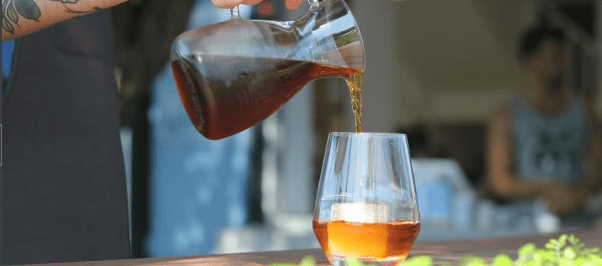
Ready to Drink Cold Brew - 1:15 brew ratio
The alternate is to make a ready-to-drink product straight out of the brewer - 1 part coffee to 15 parts water (67g of coffee per litre of water).
The finished brew using this recipe has similarities to filter coffee in taste and texture, highlighting more of the nuances found in more delicate coffees.
This works great if you’re only planning to serve it black, or with small amounts of milk – however it doesn’t allow many other serving options. Also, if you’re used to drinking heavy, espresso-based coffees, you might find the body (mouthfeel) too light for your tastes using this recipe.
Shop Cold Brew
Cold Brew Coffee Recipe: a Step-by-step guide
How to brew a cold brew concentrate using the Toddy Cold Brew Coffee Maker. This method allows you to dilute the brewed coffee with water, milk and a whole host of other ingredients. The ratios for coffee and water work for most cold brew devices, but this recipe is specifically written for the standard Toddy cold brew system.
Ingredients: Cold Brew Concentrate
|
Coffee |
400g |
|
Water |
2Lt |
Method
- Wet the filter and insert it into the groove inside the brewer. Don't forget to insert the plug in the bottom.
- Add the paper filter bag to the brewer. The brewer will work without this, but it helps to extract more from the coffee, and makes clean up a whole lot easier.
- Grind the coffee coarse (between filter & french press / plunger) and add to the brewer
- Pour filtered water over the grounds, try to wet them as evenly as possible. If you're using the paper filter bag stir the coffee to make sure the grounds are completely wet. If you're not using the bag, don't stir the coffee as the fine grinds can block the smaller filter - just pat any dry grounds you can see with the back of a spoon.
- Cover the brewer and leave to brew at room temperature for 20-24 hours
- The next day, remove the plug and place on the decanter to drain. Add the airtight lid and store in the fridge for up to 14 days.
Serving cold brew by the glass
If you’re cold brewing using the ready-to-drink method, then simply grab your favourite cup, pour it over ice, kick back in hammock and enjoy. If you’re brewing a concentrate, then you’ve got a few options… Grab a chilled glass (or upcycled jar), add some ice cubes and pour in either:
| Black (Still) | 1 part cold brew | 1 part cold water |
| Black (Sparkling) | 1 part cold brew | 1 part sparkling water |
| Milk (or alternative) | 1 part cold brew | 2 parts milk |
If using the ready-to-drink ratio, another option is to bottle the brew (we sourced ours here). This way, you can prep a whole batch ahead of time. When the rush comes, customers can just grab and go - oh, and it looks cool too…
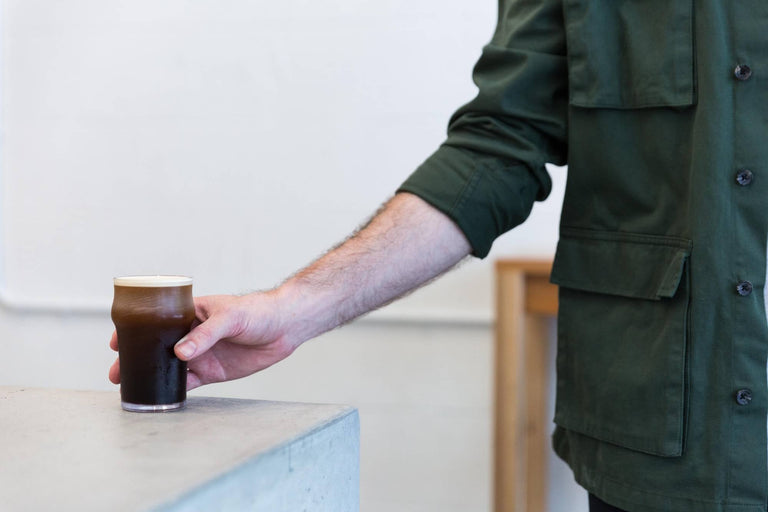
Cold Brew vs Cold Drip
Let's clear up some confusion. When people talk about "cold drip," they're usually referring to the fancy glass towers by brands like Yama & Hario. With these devices, cold water drips through the grounds over a number of hours into a glass vessel at the bottom.
While they look cool (and can be breathtakingly expensive) I’m not a big fan. Why? To be honest, I just don’t think the coffees tastes very good when brewed with these devices. The finished product is often under-extracted, watery and just generally…flavourless.
On the other hand "Cold Brew" typically refers to devices where the coffee grounds are fully immersed in cold water. Yes, I'll admit these devices are unlikely to end up on a foodie's Instagram feed - but they can deliver cold-brew that is simple to make, cheap, and genuinely tasty when it's done well.
Nitro cold brew
Nitro Cold Brew has become a phenomenon of its own. The creamy texture and Guinness-like visual effect of injecting nitrogen gas into the brew is a real crowd pleaser.
Of course, if you want to serve cold brew on tap, you going to need to get some extra equipment. The easiest option is to grab an all-in-one benchtop unit, like the creatively named ‘Nitro Cold Brew Coffee System’.
With a system like this, you plug it in, drop the hose into a container of cold brew and pull the handle. If you like a more hands-on approach, you can search through your local home brew shop (beer, not coffee) and put together a kit of kegs, nitrogen gas cylinders & Stout taps.
It takes a bit more know-how, but a keg system will allow for larger capacity if you need to go big In my opinion, you really need to be moving a lot of cold brew for this to be a desirable setup. After all, fresh is best...
Even more ways to serve Cold Brew
Once you’ve locked down the basics, then here are a few more recipes for serving cold brew.
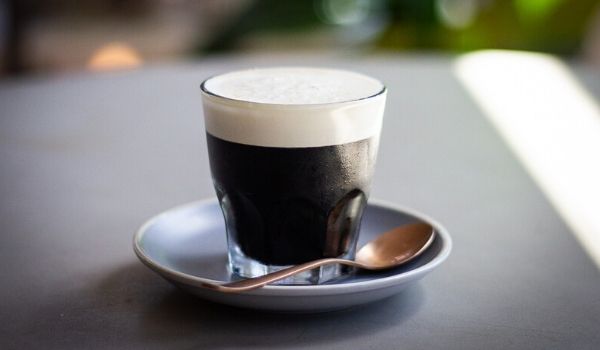
Cold Brew Macchiato
Cold Brew with salted whipped cream The whiskey-like intensity of cold brew concentrate is balanced by the richness of the cream. The pinch of salt helps bring the coffee flavour to life. It’s also virtually zero carbs.
Ingredients
- Cocktail shaker
- 60 ml cold brew concentrate
- 30 g pure cream
- Pinch of fine pink salt (or whatever colour you prefer)
Method
- Add cream & salt to a cocktail shaker
- Shake well for 5 seconds to lightly aerate the cream
- Pour cold brew concentrate in a small glass
(90ml piccolo glass or 120ml gibraltar glass) - Float salted cream onto the cold brew over the back of a spoon to form clean layers
- Drink through the cream for most delicious results

Cold Brew Frappe Recipe
Frappes have been out of fashion since the 90’s. Perhaps this can turn things around. Every bit as thick and creamy as the classic-versions-from-unnamed-multinational-chains, but with a fraction of the sugar and without all the extra additives.
- A blender that can crush ice
- 200 g ice cubes
- 160 ml cold brew concentrate
- 140 ml milk
- 60 ml pure cream
- 1 tbsp (7g) rice malt syrup (or other liquid sugar)
- ¼ tsp (1g) xanthan gum*
- Add ingredients to a blender
- Blend until the ice is smooth
- Pour into a tall glass (400-500ml)
- Top with whatever your heart desires, we used chocolate...
*Xanthan Gum can be found in the health food / gluten free section of the supermarket. It’s the magic ingredient to stop the ice separating into layers.
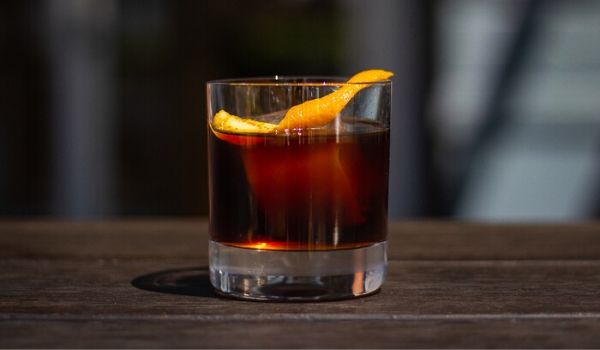
Cold Brew Negroni Recipe
The classic Italian cocktail, the Negroni is hot right now. So we’ve given it a cold brew coffee twist, by substituting some of the Campari for cold brew concentrate. Of course, to serve this you’ll either need a liquor licence, or perhaps save this one for after hours
- Cocktail Shaker
- 30 ml Cold Brew Concentrate ((1:4 brew ratio))
- 30 ml Semi-dry Vermouth
- 30 ml Gin
- 15 ml Campari
- Ice Cubes
- Add all to boston shaker
- Shake well
- Strain into an 8oz glass (240ml) half filled with ice
- Garnish with orange peel
